July 29 - August 4, 2012: Issue 69
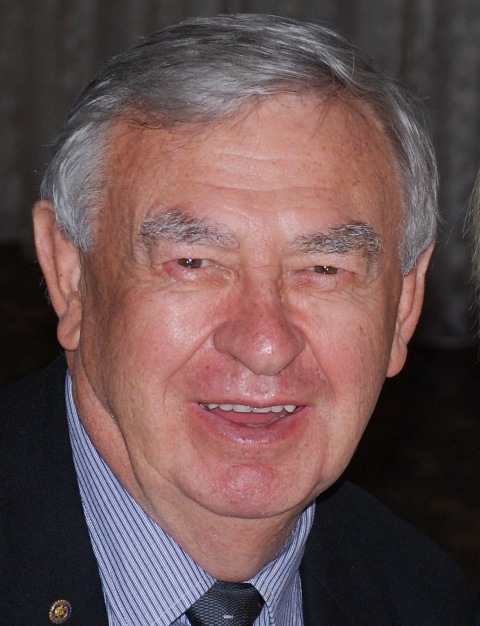
Graham Spong, photo by and courtesy of Doug Elliott .
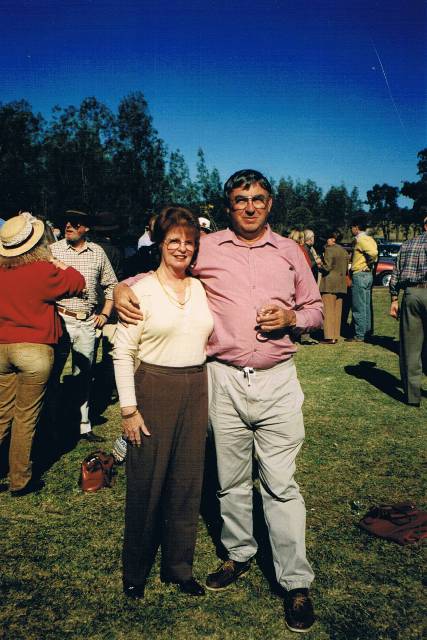
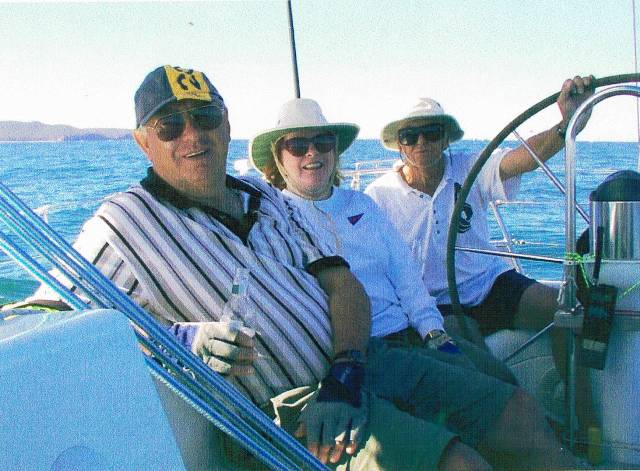
The Repulse Bay area is today one of the most expensive housing areas in Hong Kong. The prices are matched only by the Peak. In 2006, some property prices reached HK$20,000 (US$2,500) per square foot...
In 1841, the bay was used as a base by pirates and caused serious concern to foreign merchant ships trading with China. The pirates were subsequently repulsed by the British Fleet; hence the name. Another theory holds that the bay was named after HMS Repulse which was stationed at the bay at one point.
In the 1910s, Repulse Bay was developed into a beach, and the Repulse Bay Hotel was built in 1920. To attract swimmers, a bus route from Central to Repulse Bay was created, and now stands as one of Hong Kong's oldest bus routes. During the Battle of Hong Kong in World War II, Repulse Bay was an important strategic location. The beach was extended artificially, and thus the sand closer to the shore is coarser than that further away.
Until the early 1960s, residential buildings were quite restricted. Three blocks of six storey apartments were developed by Dr. P. P. Chiu and his brother P. W. Chiu, part way up the mountain overlooking Repulse Bay. These were luxury apartments with servants' quarters, with only two apartments per floor in Blocks A and B. Apartments in Block C are smaller. For a long time, these were the only apartments allowed on the mountain.
Occupying the whole of the west side cliff above the beach was a large castle with a swimming pool, greenhouse and tennis court called Eucliffe, one of three castles owned by the millionaire Eu Tong Sween. During the Japanese occupation it was used by the Japanese, and executions were said to be carried out by bayoneting or shooting the victims on the edge of the cliff, then allowing them to fall down to the rocks below. The Eucliffe structure and historical site was demolished to make way for an elegant row of low apartments.
The former Repulse Bay Hotel was demolished in 2 stages during the 1970s and 1980s. Later a boutique shopping mall was constructed on part of the old hotel site to mimic some of the lost colonial architecture.
On the eastern end of the beach is Kwun Yam Shrine, with prominent statues of goddesses Kwun Yum and Tin Hau. Also overlooking Repulse Bay, although from higher up, is the famous "building with a hole". Video Uploaded by camlproductions on Jan 16, 2007
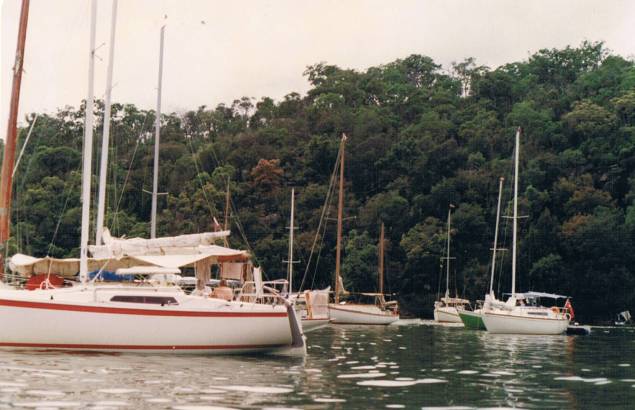
Hallets Beach - Cowan Creek, 1985. On the southern shore of Cowan Creek immediately upstream from the entrance to Refuge Bay.
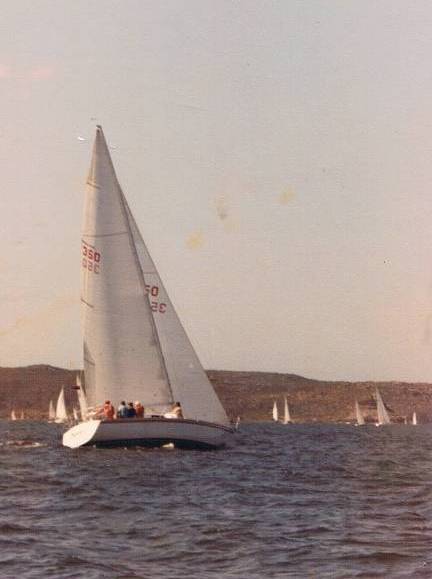
The IBM 1401 was a variable wordlength decimal computer that was announced by IBM on October 5, 1959. The first member of the highly successful IBM 1400 series, it was aimed at replacing electromechanical unit record equipment for processing data stored on punched cards. Over 10,000 units were produced and many were leased or resold in less developed countries after they were replaced with newer technology. The 1401 was withdrawn on February 8, 1971.
The all-transistorized IBM 1401 Data Processing System places the features found in electronic data processing systems at the disposal of smaller businesses, previously limited to the use of conventional punched card equipment. These features include: high speed card punching and reading, magnetic tape input and output, high speed printing, stored program, and arithmetic and logical ability.'
The 1401 may be operated as an independent system, in conjunction with IBM punched card equipment, or as auxiliary equipment to IBM 700 or 7000 series systems. ("1401 Data Processing System". IBM Archives. October 5, 1959.)
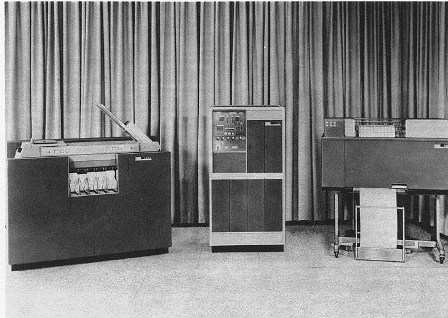
Photo of Basic IBM 1401 system from BRL 1961. http://ed-thelen.org/comp-hist/BRL61-ibm1401.html#IBM-1401
"A Third Survey of Domestic Electronic Digital Computing Systems" Report No. 1115, March 1961 by Martin H. Weik, published by Ballistic Research Laboratories, Aberdeen Proving Ground, Maryland
From left to right. IBM 1402 Card Read Punch, Model 1 - $24,800, IBM 1401 Processing Unit, Model A-1 - $70,500, IBM 1403 Printer, Model 1 - $30,300, Total Price $125,600
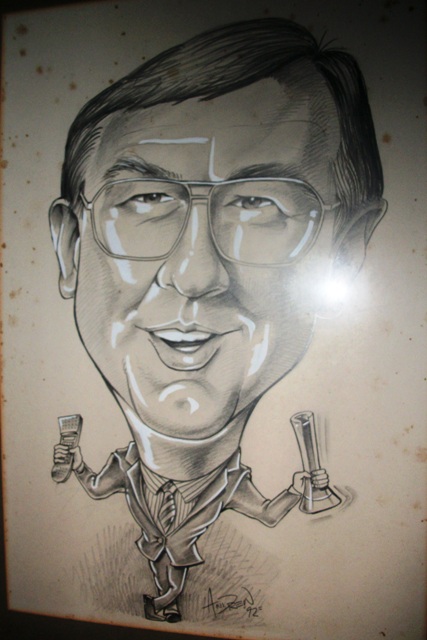
|
|
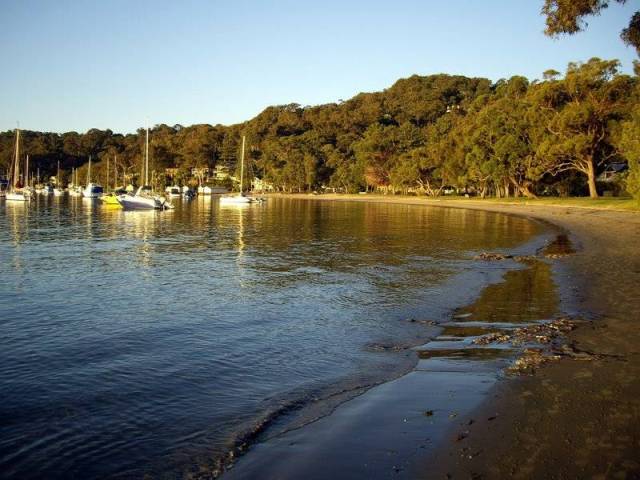
Copyright Graham Spong, 2012. All Rights Reserved.
Graham Spong
An advocate of ‘lifelong learning’ who worked for IBM for 32 years, 28 of these as a Manager, and always jumped at the opportunity to further his education even when grown, attending the IBM Summer Program at Cambridge, the Colgate Darden School at the University of Virginia, is Graham Spong.
This gentleman’s life, besides doing 'a million things' has a constant thread of electronics through it, from interest in Crystal sets as a boy through to ham radios when older. He has seen some of the major advancements and shifts in computers and business, eventually leading up the Australian Quality Awards from 1988 when they were introduced. These were Australia's most prestigious business event and recognised outstanding achievements in organisations which are using Quality to achieve international competitiveness. A gent who has invested his essence into Australia, not just as a Rotarian and pursuing and promoting quality in all, but still supporting those who share knowledge.
The other constant threads in Graham are a love of enjoying the environment, particularly on yachts and doting on his children, remarking during his interview that hearing children playing on Clareville Beach was and has remained a clear favourite memory and experience. This and much loved wife Nola still light up Mr Spong’s eyes.
I was born in Melbourne, in December 1936.
Can you remember much about World War II?
I can remember the war in terms of planes flying overhead and we had a dugout in the backyard; an air raid shelter.
Which suburb of Melbourne were you in?
Ivanhoe, north out of Melbourne. We lived on the main street, upper Heidelberg road. The trams didn’t come out that far. We had trains that ran from the Princes Bridge station.
Can you remember peace being declared?
I remember a few things; I remember a celebration in Heidelberg park at the declaration of peace. Everyone singing and dancing…
Where did you go to school?
I went to Ivanhoe Public School and High School, then to the Royal Institute of Technology, it’s called the University today, studying electronics. I was with OTC (Overseas Telecommunications) at that time; these were pre-televison days. Overseas communications was by radio and using Morse Code. I remember paper tapes were used to send the messages to London and sometimes having to wait for better atmospheric conditions to send these by radio.
What was your role?
I was a technical officer. That involved servicing equipment, building new equipment for communications with overseas.
In 1959 I joined IBM (International Business Machines) as a customer engineer. When I first joined IBM we still communicated by Morse Code with London each evening so I had to learn how to type and send and receive this; which stood me in great stead for computer keyboards later on. I then went to Singapore to look after the computers there in 1963.
Singapore was interesting in 1963; there was a move to have the formation of Malaysia, which never occurred, they were almost at war with Indonesia, with the Konfrontasi: (the Indonesia-Malaysia dispute, 1963-1966); they would let bombs off when they came ashore from Indonesia. There were many Australians over there at that time, and the British Army and Airforce Base was fully staffed then.
What were your most memorable moments from there and then?
The most pleasant thing I associate with Singapore was getting married to Nola on the Saturday and I started work on the Tuesday. I couldn’t be where I am today without her; everytime we had to go overseas it wasn’t a problem.
The first time I saw her she was having lunch next door; her mother was friends with our neighbour. I went over to borrow some tool that I didn’t actually need and invited her to the CMF Ball, which she agreed to.
I was doing my National Service then, where I was in Signals with the Army, and they put me into Radio. We were in 12 Platoon with Sergeant Heritage, who had been in Japan and ended up marrying a Japanese lady, and they needed someone to fix all the radios which had deteriorated since WWII.
Nola and I went to the Ball, I was dressed in my National Service uniform as it was one their do’s, and Nola’s sister’s husband asked me; ‘What band are you in?’ (due to the uniform). We laughed.
Nola and I came back to Melbourne and I was asked if I’d like to be a Manager and I liked Singapore so much I agreed to go on another assignment. So in 1969 we went to Japan. This was a very interesting place then; there weren’t a lot of English signs, it was a boom time for Japan in cars and electronics. I had a favourite place to go called ‘Akihabara’ also known as ‘Akihabara Electric Town’ (a district of Tokyo, Japan. Akihabara is a major shopping area for electronic, computer, anime, and otaku goods, including new and used items.). I’d go there on the subway. I bought my amateur radio equipment there.
Did you have a favourite garden in Japan?
I liked the gardens in Kyoto. We saw the Spring Festival, the Blossoms changing. We had one child then, our son who we took with us; he was about 12 months old then. I remember the food; I went to Hiroshima for a meeting and there we ate the Fugu fish. I was the special guest and tradition held that they took the special guest to a Fugu fish restaurant; I asked to see the chef’s licence; there was lots of hilarity over that request. I was very friendly with one of these Japanese men and he said that when they were teenagers they used to put the poison on their tongues as a dare.
We were then asked to go to Hong Kong where my role was Region Manager in the IBM Customer Service Division. Hong Kong was still a British colony then, you couldn’t go very far. For example you couldn’t go into China. The food was terrific.
I think the ability to be able to travel so easily out of Hong Kong to other regions stands out from my years there; I was responsible for other countries then; Korea in the north, Japan, Taiwan, the Philippines, Malaysia, Thailand, Burma, Singapore, and Indonesia, Vietnam. We flew into Saigon in Vietnam, this was during the conflicts there, and would have to get into a 'stack' with the other planes and spiral down to land so as not to be shot at. I was travelling quite often as this was a growing area.
We lived in a lovely unit in Repulse Bay. Everyone had servants then. The interesting thing was we lived in a block of flats, which was quite large, and had Australian and New Zealand people there. I was friendly with guys from Dow Chemicals, a New Zealander and an Australian. We had an arrangement with the local taxi company to take us to work; we would leave at a certain time, come back at a certain time; the taxi’s name was ‘six finger taxi’; he had a telephone on a tree down on Repulse Bay; he had six digits, which was common then. These days they have surgery, but then there were a few born this way.
It was so easy to travel that I’d go away for the week and be home on the weekend, this was on Convair 880’s; we’d travel with Cathay Pacific most of the time and I had friends who were pilots. The paintings in this room, which we bought during our travels, from the Philippines and Vietnam (made from eggshells) are a personal record of then. The Australian paintings, that one, an Outback scene, is a sailing prize.
Where did you go sailing?
I used to go sailing in Hong Kong, starting in dinghies. There was a Combined Services Club, that had their own boats. Back in Avalon I’d sail here, from the Royal Prince Alfred club. I had several boats; Pyxis I and II; I was always impressed with names for stars, and this is a constellation. (Pyxis is a small and faint constellation in the southern sky. Its name is Latin for a mariner's compass) But the latest boat, which I’ve unfortunately had to sell, was called ‘Elysium’. These were 37feet boats.
One of my favourite races was the Pittwater to Coff’s Harbour race, these began in 1981. This was memorable because we’d sail up there, as you go north it gets warmer, the family can come with you, then you’d stay a few days, have time together before coming back.
My first trip there was with Norm Kiddle, who’s up the coast now, and it was a beautiful place, unspoilt.
What’s the best thing, for you, about being out on the saltwater in sea breezes?
What’s the feeling of sailing…it’s been so much a part of our life, the kids were all brought up sailing. We’d spend holidays in The Basin. The kids would sail the Magna juniors… it’s a part of living for us.
What does any Manager have to bring to the job to be a good manager?
The best thing any manager can do is find good people; Identifying those with the right attitude. It’s also vital to have great people skills to succeed as a Manager.
What was the most exciting element about being part of IBM then?
They were world leaders in this field. For me, the opportunity to bring about change and do it in a foreign environment was both challenging and rewarding. What I noticed is we could all work together, I could work with the Chinese, with Russians; the technology becomes a universal language itself, diminishing the restraints of spoken language barriers.
After Hong Kong we came back to Sydney this time and lived at Wahroonga. My role then was Australian Manager for the Service side of IBM, 1974. The headquarters for IBM was in Sydney by then, it had all been moved from Melbourne.
What were some of the advances being made by IBM in the 1970’s?
With the computers you’d have to say size. They went from filling a room to something that will fit on a desk. I can remember down in Melbourne, one of the company’s National Mutual Life, they had a viewing platform where you could come in and stand and watch the computer.
The first commercial computer was the 1401 (The 1401 was the first commercial, all “solid state” computer. Solid state engineering greatly reduced the footprint of computers in computing rooms. The IBM 1401 is called the Model T of the computer business). It was probably two metres long. These were used for commercial work mainly; anywhere that required calculations, data storage, although storage wasn’t big in those days.
The role changed a few times as there were mergers and so forth; I was Director, Customer Engineering but then they asked me to move into Marketing, so I gave that a go. It was important in the late 1970’s, as they were doing one on one marketing but also just introducing one on many marketing; like a seminar; the product’s price came down and this had to be matched by the way we were marketing it; one to one changing to one to many. We had a range of small to large computers then. What we were trying to do was stop two different marketing reps going to the one company saying ‘I’ve got the solution for you.’
Then they asked me to move into a new operation, in Pymble, called Volume Products, and that’s where we started handling the PC and originally handling this like a large computer. So we set in a path to cut down the process between the factory and the consumer. We had an office in Pymble, just near present day 3M, which was supposed to be a no frills operation.
Then we moved into the marketing of Services. It was a big change for IBM. What they realised was that you couldn’t make money out of hardware anymore, or it was more difficult to. Services meant putting the whole solution together rather then just running something that was one piece. This involved providing the whole solution; product, software, services; that became the biggest growth area for IBM. I was part of that.
IBM then paid for a year in my next job; I went to Enterprise Australia as an executive; my role there was General Manager of the Australian Quality Awards. That involved companies coming in and being evaluated by our organisation; if they did well they’d receive an award. The chairman of Enterprise Australia was also the chairman of IBM. The aim was to lift the standard of quality of products and services in Australia, or to recognise these to further enterprise in Australia.
I did this for six years; the culmination of the year was always at the Awards night. Initially the Awards nights had been in either Sydney or Melbourne; they were small affairs. I changed all that; we had an awards night in each of the states with the State premier and the Prime Minister attending. Telecom provided the connection for us so they were all interlinked by television; that became the expensive part of doing the Australian Quality Awards.
The first one I experienced, we had the State Premiers connected, and we had the Prime Minister coming. Here I am, down in Melbourne, preparing for the night, and I answer the phone… “Bob Hawke here; not coming tonight.” And I thought, ‘oh dear.’; anyway, he sent one of the other ministers down.
What was it like meeting dignitaries in the course of your duties?
Oh, I was always keeping an eye on proceedings at the awards, making sure they’d arrive on time, stick to schedule during speeches, a; ‘hurry up please, you’re making us run late’ experience.
So who were some of the outstanding winners of this award?
They were all very good, of a very high standard. In the Quality Award they had to demonstrate a number of categories in leadership; how they managed the business, how they related to the employees, their growth of employees and the business; they were all examples of how to excel in their particular business.
There was no limitation on what kind of businesses could enter. There was a manufacturing company down in Melbourne, run by a lady, and she’d be the outstanding one in my mind. She stepped in when another family member was ill; it was a family business.
Unfortunately during this time, I was in the backyard in Clareville and I got bitten by something, perhaps a spider. This caused an infection and associated health issues and I decided I’d have enough of working and retired. We were at Clareville for 17 years.
What is your favourite thing to do on computers now?
Doing the banking, not having to stand in line. Using Skype… that’s good.
What to you is the best thing about the development of computers, what have they given to the human race?
Personally I think the ability of everyone to communicate around the world is great. Conversely, one of the things I dislike about computers today is the maintenance required. Behind every computer is all this maintenance; that hasn’t changed. The cause behind many computers crashing is they need constant upgrades of programs; if you do experience a crash you generally find they’ve been updating the programs. The most positive thing that I can see is that they have narrowed the borders or that there are no borders anymore; no walls anymore.
Children?
I have two children and one grandchild. My son Evan is a yacht designer; he has a PhD in Naval Architecture, or more specifically Computational Fluid Dynamics; this is to do with the flow of water over the surface. Melanie, my daughter is a Senior Manager with the Federal Government; I think she’s so good at what she does due to training in various management roles before taking on her current position.
What is your favourite place in Pittwater and why?
Undoubtedly Clareville beach. The why is it’s lovely to hear the waves and the children playing. We faced the beach.
What is your ‘motto for life’ or a favourite phrase you try to live by?
Don’t let things overwhelm you, try to get on with what you want to do. Do all you can to help yourself; keep active.
I’ve had onset of Parkinson’s the last few years and I have good days and bad days; it effects my walking, but through this I remind myself to not let things overwhelm me.